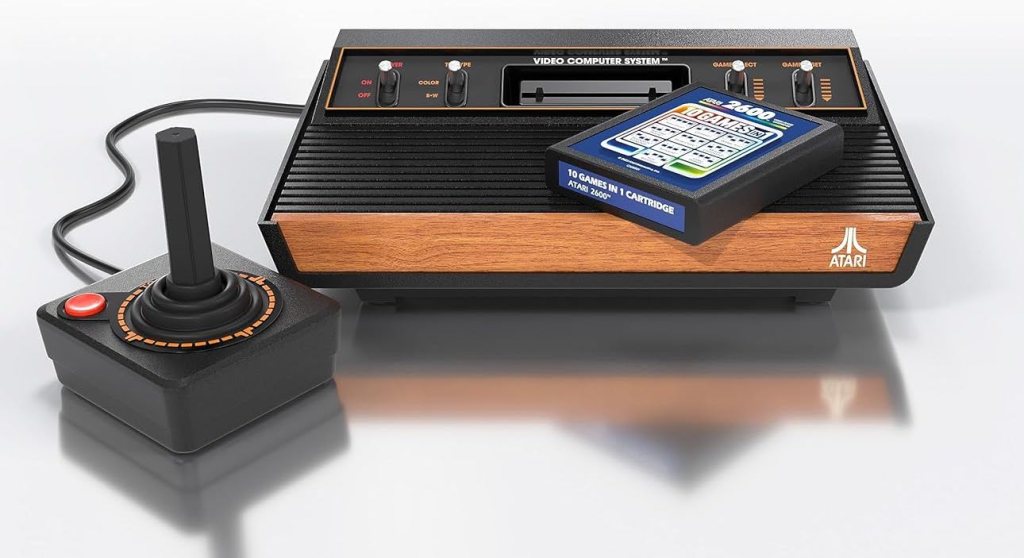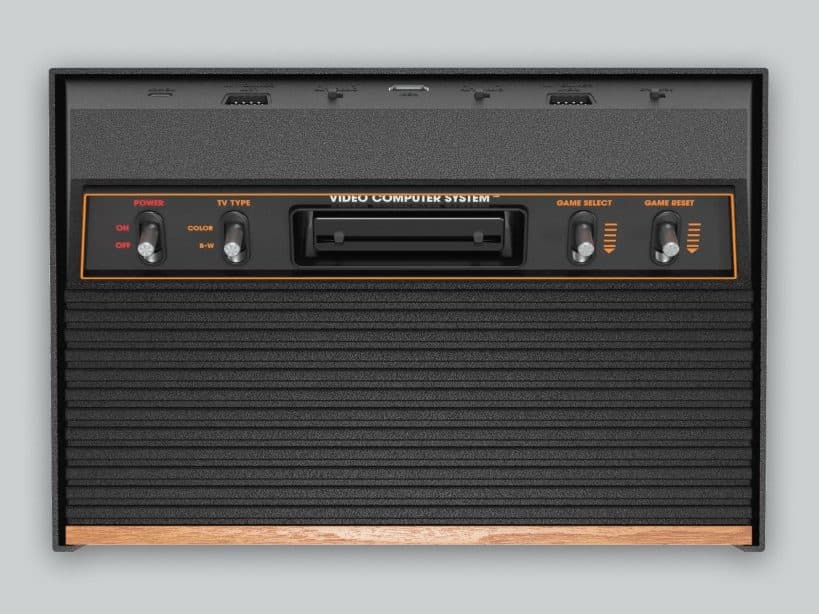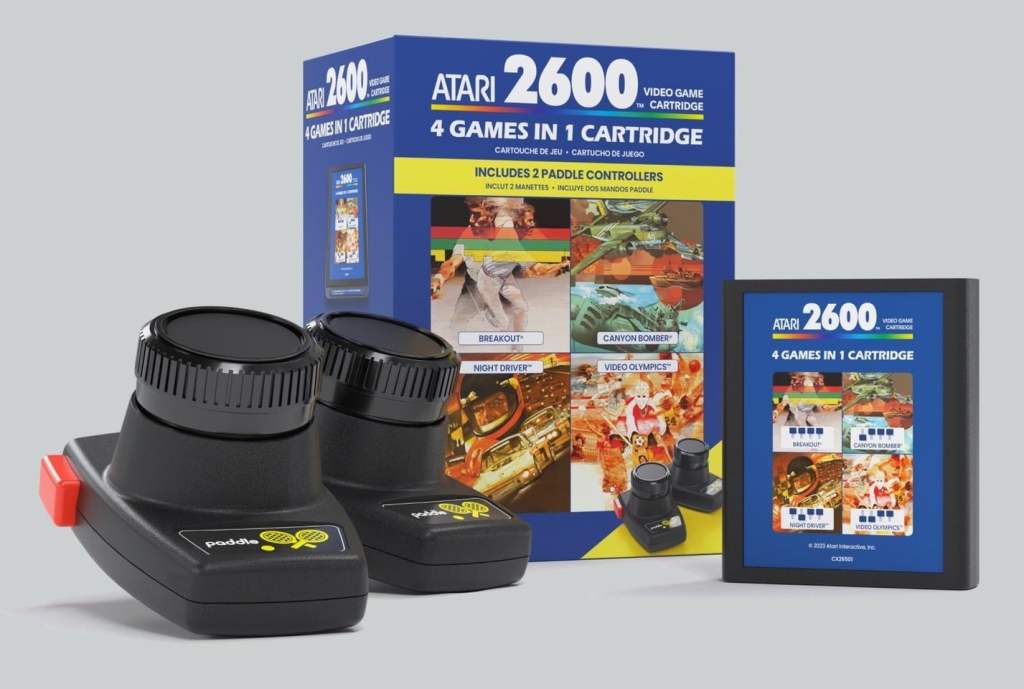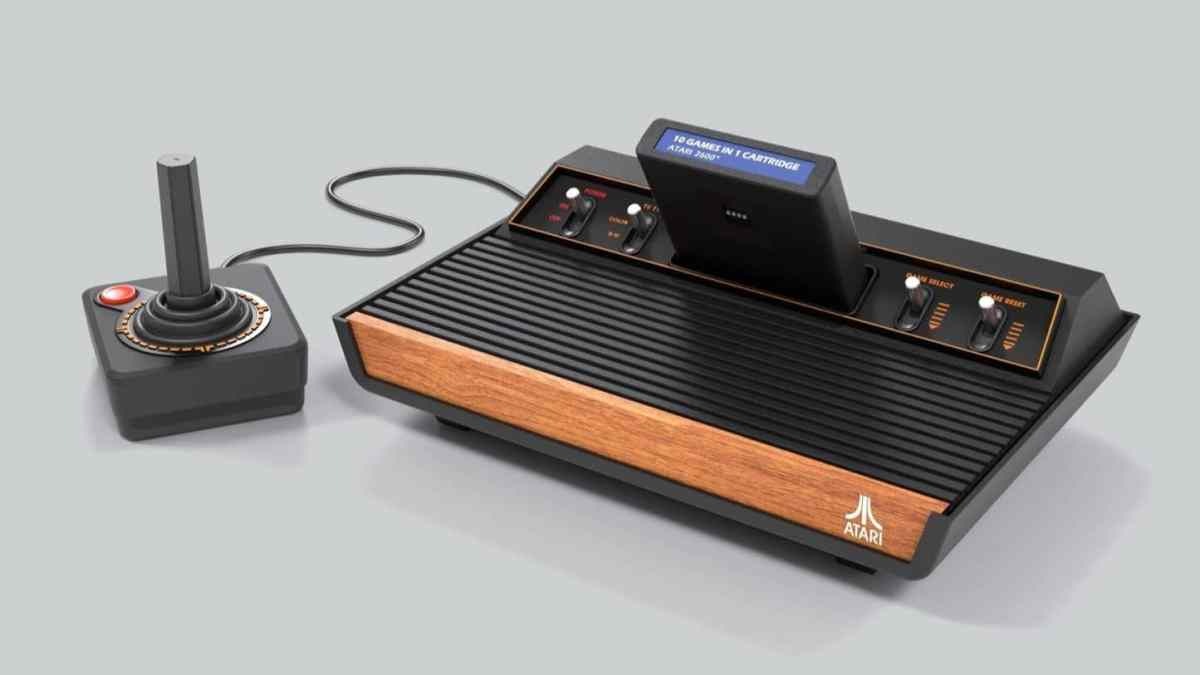My partner is never excited when I get a package in the mail. With zero interest in video games, every time I get a new piece of technology for review, or a promotional package urging me to be aware of a new video game, she’s been ambivalent. Unimpressed. Increasingly annoyed, given the amount of space this stuff takes up in our home. But to my utter shock, the Atari 2600+ was different.
When I opened the cardboard box containing Atari’s latest attempt to capitalise on its video game legacy, the response was “Ooh, an Atari!”
Let me be clear – my partner has never owned an Atari. I have never owned an Atari. I have never even played an Atari before the 2600+. It represents a period of video games that is squarely before my time, and not something I have ever had a relationship with, outside of a historical curiosity.
But for some reason, the word ‘Atari’ serves as some kind of uniquely bizarre touchpoint for people who don’t necessarily have a relationship with games. You see this all the time in older generations – when I mention I work in video games, Atari is the first thing they offer in understanding, and it’s not an uncommon occurrence.
“What’s Atari up to these days?” fellow GamesHub writer Leah J. Williams was recently asked by her father. “Oh, you know… Hotels. NFTs,” she said.
So needless to say, I was very surprised that my partner was excited about this thing.
The Atari 2600+ is a Statement Piece

The Atari 2600+ is the latest in a trend that sees video game companies diving into the nostalgia market, and revisiting their past in the form of miniature consoles. These classic mini consoles also make a selection of back catalog video games accessible to a new audience with modern household tech, through the magic of low-cost modern engineering and the wonderful and valuable world of emulation.
But the Atari 2600+ takes a different approach. Instead of storing a large catalogue of games on board, the 2600+ seeks to replicate the original console and the experience around it, meaning it plays games from physical game cartridges, and its archaic, 1970s way of operating the machine and navigating software systems all remain.
There are modern affordances, of course – the console is powered via USB-C, video is output via HDMI, and there’s a switch to toggle between 4:3 and 16:9 aspect radios. The games are still technically running through emulation software loaded onto the console itself, but other than that, the goal of the 2600+ is to be a close replica of the original console.

It retains its original form factor and lever switches (although at 80% of the original size), and Atari purports that any original Atari 2600 cartridges, or those from the later Atari 7800, will work just fine. Original Atari controllers are also reportedly compatible with the 2600+, since the connecting ports have not been modernised.
As a household that enjoys 1970 design aesthetics, my partner was impressed with this thing, even going so far as to suggest we put it out on display in the living room (all my consoles live out of sight). And even more strangely, she was immediately eager to get stuck into some games.
Retro games, timeless amusement
The Atari 2600+ stays true to its original 1970s technology. It’s packaged with a 10-in-1 game compilation cartridge that, entertainingly, requires you to toggle manual dip switches on the cartridge itself in order to load the game that you desire. As someone who has never played an Atari, there was a small adjustment period (and some close reading of the online manuals) required to understand how to navigate the games themselves. Navigating via controller? We have it too good these days.
Once the game is loaded, you need to select the game mode you want to play with the Game Select lever on the console itself, and then pull the Game Reset lever, to actually start the game.
Given that Atari games are some of the earliest video games in history, I naturally had the expectation that these titles would be incredibly simple, and a lot of them certainly are. However, there were some standouts whose design and ambitions definitely kept me glued to the screen for much longer than I imagined.

Missle Command was a game I was familiar with, but never played for any length of time, and was the clear standout in the 10-in-1 pack. Adventure, though very primitive-looking, was an impressive proto-RPG/adventure game that was easy to project my imagination onto. I was taken aback by the ball physics in Video Pinball, and the player animations and beach aesthetic in RealSports Volleyball, though I was less impressed by Yars Revenge, another game I knew only by its strong reputation. Haunted House, an adventure where you play a pair of googly eyes navigating through a dark haunted house – quite possibly one of the earliest survival horror games – felt incredibly inventive, given the hardware limitations.
Atari has also re-released two standalone games to coincide with the 2600+: Berzerk – Enhanced Edition, a top-down shooter, and Mr. Run and Jump, a challenging platforming game. It’s clear why these slightly more ambitious games got this treatment.
But the biggest hit for our household was the Paddle Controller Bundle, which comes with two rotating dial controllers and an additional 4-in-1 game cartridge of supported paddle games. The standout was Video Olympics – itself a compilation of various Pong-like competitive games.

Featuring a wealth of game modes, like the basic tennis-like setup of Pong, Foozeball-style setups that replicate Soccer, and a pretty interesting take on basketball, my partner and I had an absolute blast playing Video Olympics with each other. Video Olympics is the reason why the Atari 2600+ remains set up, and we were even pretty invested in the idea of letting our very young children play it.
“Stuff like Mario Kart is too stressful and overwhelming,” my partner told me, as the high-pitched bips and bops of Video Olympics occasionally punctuated the otherwise quiet house. “This is just a lot more calm and simple.”
An expensive hobby
In researching which Atari games I should seek out next, it became clear that a wealth of the console’s best games may not get the same physical reproduction treatment as Berzerk or Mr. Run and Jump.
Activision owns the rights to Pitfall and River Raid, which are often cited as the best games on the platform, and Namco holds the rights to classics like Space Invaders and Pac-Man. Original cartridges from the 1970s and 80s are available on online marketplaces, but sellers know the value of what they have.
And when a single original cartridge will set you back the same amount as the much talked-about Atari 50 compilation from games preservation-focussed studio Digital Eclipse, which serves as a playable museum exhibit, the value of pursuing the cartridge path feels like an expensive luxury hobby I’m not quite ready for.
But regardless, that doesn’t stop the Atari 2600+ itself from being a very stylish and entertaining piece of hardware. And for my household, the strength of Video Olympics alone is enough to make it feel like a valued member of the family.
Four Stars: ★★★★
The Atari 2600+ is US $129.99 and comes with a single joystick and the 10-in-1 game cartridge. The CX30+ Paddle Controller Bundle is US $39.99, and comes with two Paddle Controllers and a 4-in-1 game cartridge. Individual games are US $29.99 – Berzerk – Enhanced Edition and Mr. Run And Jump are available at the time of writing.
An Atari 2600+, Paddle Controller Bundle, Berzerk – Enhanced Edition, and Mr. Run and Jump were provided to GamesHub for the purposes of this review. GamesHub reviews are rated on a 5-point scale.






